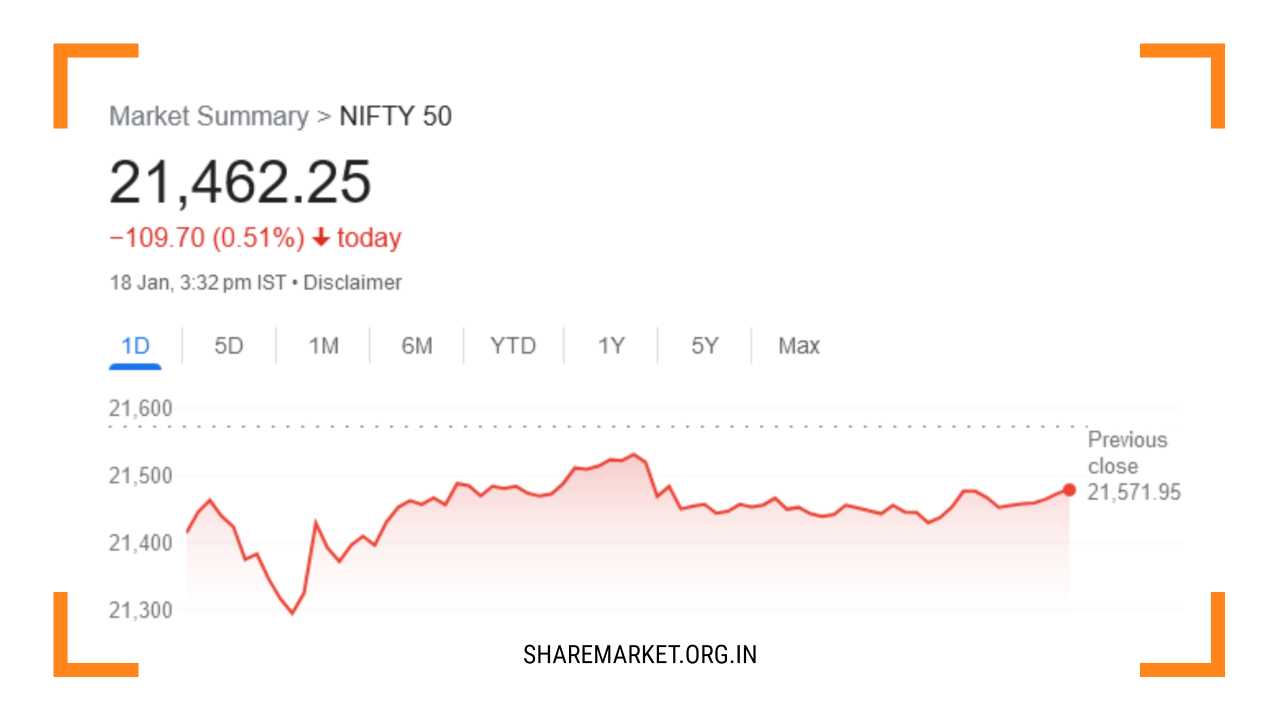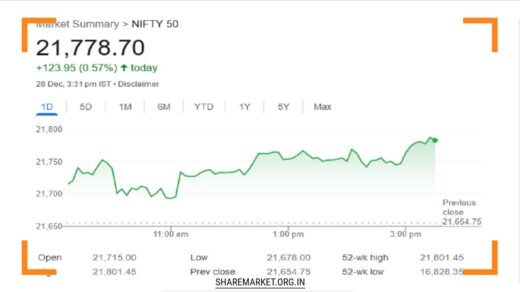3rd Day: Market in Decline; Nifty Prediction for Tomorrow

Nifty Prediction for Tomorrow
Navigating Market Volatility: An In-Depth Analysis of the Third Consecutive Day of Decline
The persistent downturn in the Indian stock market over the past three consecutive days, culminating on January 18, has prompted investors and analysts to scrutinize the factors contributing to this decline.
A confluence of global economic headwinds, sector-specific challenges, and technical indicators has created an intricate landscape for market participants.
In this comprehensive analysis, we delve into the nuances of the market dynamics, examine the performance of key sectors and stocks, explore the influence of global factors, and evaluate expert insights for potential market movements.
Market Overview:
On January 18, the Indian stock market witnessed a continuation of its downward trend, primarily driven by intensified selling pressure in banking and IT stocks.
The market attempted a midday rebound, but this recovery proved short-lived, ultimately closing with the Sensex down 313.90 points (0.44%) at 71,186.86 and the Nifty down 109.70 points (0.51%) at 21,462.30.
The BSE midcap and smallcap indices managed to maintain a relatively flat performance.
Global Economic Impact:
The global economic slowdown has cast a long shadow on financial markets worldwide, creating an environment of heightened uncertainty.
This external influence has been particularly pronounced in the Indian markets, as they opened with a decline on January 18.
The initial hours of trading saw an increase in selling pressure, reflecting the interconnected nature of financial markets and the rapid transmission of global economic signals.
The global economic headwinds are multifaceted, including concerns about inflation, supply chain disruptions, and the ongoing geopolitical landscape.
Investors are closely monitoring developments on the international stage, as they can have a profound impact on market sentiment and investment decisions.
Top Losers and Gainers:
Analyzing the performance of individual stocks is crucial to understanding the underlying trends within the market.
On the third consecutive day of decline, notable losers included LTIMindtree, HDFC Bank, NTPC, Titan Company, and Asian Paints. These losses are indicative of challenges within the IT, banking, and manufacturing sectors.
Conversely, amidst the sea of red, certain stocks demonstrated resilience and posted gains. Sun Pharma, Cipla, Tech Mahindra, Tata Motors, and Axis Bank emerged as the top gainers in the Nifty.
This divergence in performance highlights the sectoral variations and the potential for certain industries to weather market downturns more effectively.
Sectoral Performance:
Examining the sectoral performance provides valuable insights into the breadth and depth of the market decline. On the day in question, Bank, FMCG, IT, Metal, and Power indices closed 0.3-1% lower, reflecting a broad-based sell-off.
The banking and IT sectors, in particular, faced notable headwinds, contributing significantly to the overall market decline.
In contrast, Auto, Capital Goods, Health Care, Oil & Gas, and Realty indices posted gains ranging from 0.3% to 0.7%.
This divergence underscores the importance of sectoral rotation during market downturns, as investors seek refuge in industries that exhibit relative strength.
Market Outlook for January 19:
As investors look ahead to January 19, financial analysts offer valuable insights into the potential trajectory of the market. Jatin Gedia of Sharekhan notes that Nifty experienced significant fluctuations throughout the trading day.
He suggests that an upward counter-trend pullback could extend to the range of 21600–21650, where the 20-day moving average poses resistance. The immediate resistance for Nifty is identified at 21550–21570, with support visible at 21350–21300.
Ajit Mishra of Religare Broking provides an additional perspective, stating that Nifty struggled to defend the short-term moving average, specifically the 20 EMA.
The index approached the next major support level of 21,200, and signs now suggest a potential consolidation phase. Mishra advises caution, noting that if Nifty rises to the range of 21,700–21,850, new short positions might be formed. In such a scenario, he recommends lightening positions in case of a surge and waiting for stability in the trend.
Technical Analysis:
Technical analysis plays a pivotal role in understanding market dynamics and identifying potential turning points. Jatin Gedia’s observation about Nifty facing resistance at the 20-day moving average and the delineation of support and resistance levels provides a roadmap for traders navigating the current volatility.
Similarly, Ajit Mishra’s emphasis on the importance of the 20 EMA and the major support level of 21,200 underscores the significance of technical analysis in making informed investment decisions.
Traders and investors are closely monitoring these technical indicators as they provide valuable insights into potential reversal points, support and resistance levels, and the overall health of the market.
In times of heightened volatility, technical analysis can serve as a compass, guiding market participants through uncertain terrain.
Investor Sentiment and Strategy:
The current market conditions demand a nuanced approach from investors. While uncertainties prevail, opportunities for strategic investments may also emerge.
Investors are advised to stay informed about global economic trends, geopolitical developments, and sector-specific news that could influence market sentiment.
In times of market volatility, investor sentiment often fluctuates, swinging between fear and greed. It is during these periods that disciplined and informed investment strategies become paramount.
A diversified portfolio, carefully calibrated risk management, and a long-term perspective can help investors navigate the choppy waters of market fluctuations.
As analysts project potential upward counter-trend pullbacks, it becomes crucial for investors to reassess their portfolios and risk tolerance.
In times of market volatility, a diversified portfolio and a disciplined investment strategy can provide a level of resilience against short-term fluctuations.
Final Remarks:
In conclusion, the third consecutive day of market decline on January 18 reflects the ongoing challenges and uncertainties in the financial markets.
The interplay of global economic factors, sectoral performance, and technical indicators paints a complex picture for investors.
While caution is warranted, opportunities may arise for those who closely analyze market dynamics and adapt their strategies accordingly.
As the market navigates through these challenging times, staying informed, maintaining a diversified portfolio, and adopting a disciplined approach to investment are key principles that can guide investors through periods of volatility.
The outlook for January 19 remains uncertain, emphasizing the need for vigilance and strategic decision-making in the days ahead.
In an environment where markets are driven by a multitude of factors, informed decision-making becomes the cornerstone of successful investing.

















